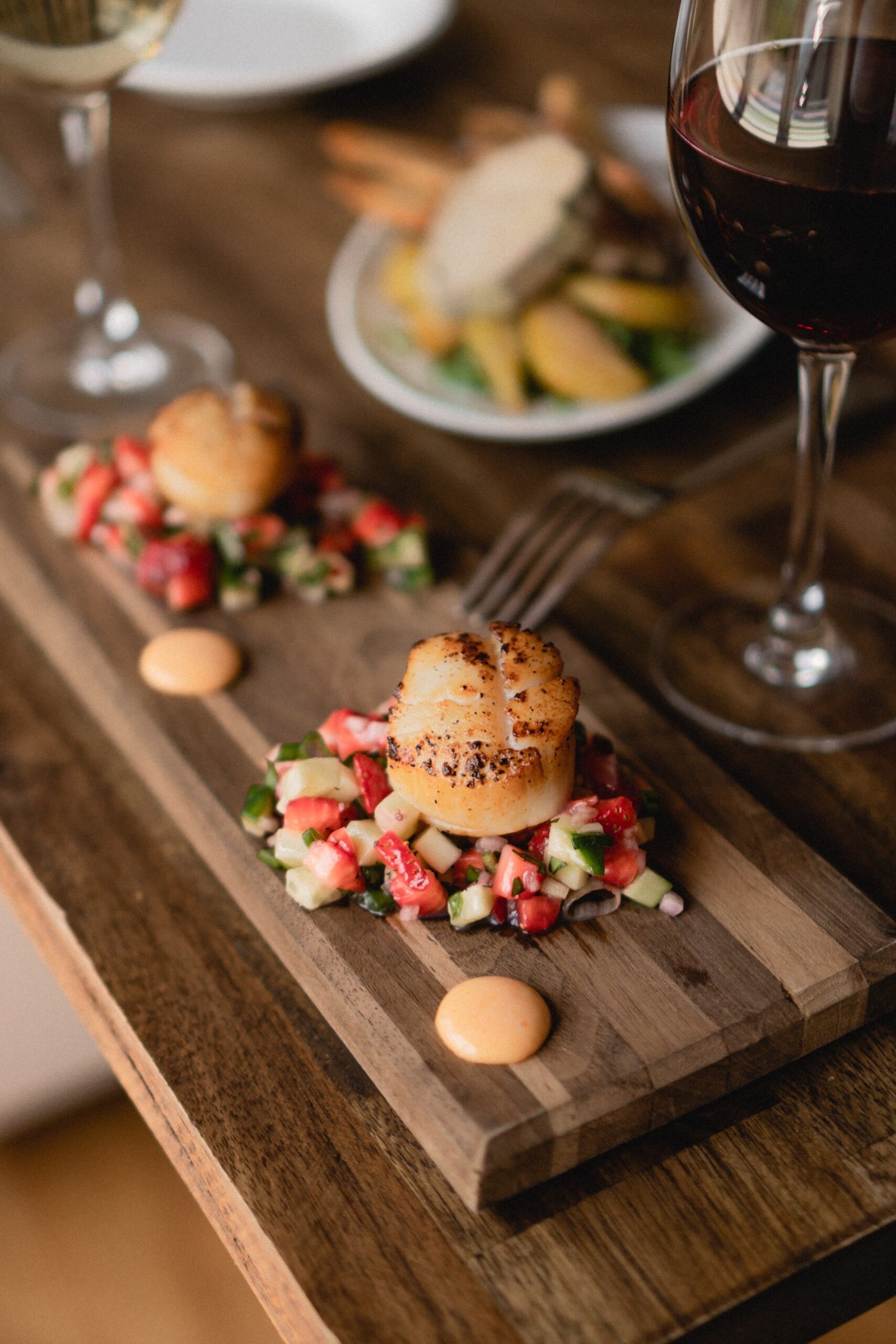Seasoning is the key to unlocking flavor and bringing dishes to life. It requires more skill and finesse than you might think. To gain a better understanding of how to create sumptuous and flavorful dishes with the help of some simple seasonings, read on for some basic tips on how to balance flavors in your cooking.
1. The Subtle Magic of Seasoning: Unlocking the Secrets of Flavor Enhancements
Seasonings have been used for centuries to bring out the best flavors of food. Aromatic spices, salty seasonings, and tangy condiments each contribute nuanced flavors that enhance otherwise bland dishes. But, to truly unlock the secret to flavor enhancements, we have to look beyond the popular seasonings.
Going one step further, the subtle magic of herbs and minerals are what give dishes unbeatable flavor. From the ancient savory flavors of oregano, to the mysterious complexity of bay leaves, herbs bring a special touch to food that just can’t be replicated. A pinch of herbs can give dishes the unexpected little something that takes them from good to great.
Minerals, revered for their subtly sweet flavors, are another key component in elevating the ordinary. Sage and thyme are two minerals that have been long associated with flavor enhancements, creating a subtly sweet undertone to whatever they are added to. But, minerals don’t just have to be used as seasoning. Powders like turmeric, cumin, and ginger have been widely used to create an intriguing contrast of flavor that takes dishes to the next level.
Unlock the Secrets of Flavor Enhancements with the Subtle Magic of Seasonings:
- Aromatic spices to add depth
- Herbs to bring a special touch
- Minerals for subtly sweet flavors
- Powders for an intriguing contrast of flavor
If you’re looking to take your dishes to the next level, then unlocking the secrets of seasoning is a great way to get started. By combining the subtle magic of herbs and minerals with popular seasonings, you can create flavor combinations that are sure to tantalize the tastebuds. So, why not try out the subtle magic of seasoning today?
2. Spice Up Your Meals: Mastering the Art of Balancing Flavors
When you’re seeking out a delicious meal, you should consider more than the components of a recipe. Adding one simple ingredient can often be the difference between a basic meal and something extraordinary! The art of balancing flavors is essential to an enjoyable dining experience, making sure that the ingredients of a dish are equal culinary fighters. Follow these tips and be on your way to marrying delicious flavors!
1. Pick Your Battle
Let’s choose some champions! Taking the ingredients of a dish into account can help determine the hero of a meal. Look at the proteins, fats, and starches; ideally you want one of each. Think of the flavor! If they’re all on the same playing field, it’s your choice to make the dish a savory or sweet victory. From there it’s easy to pick a good base like rice or a salad mix. The star of the meal is settled; it’s now time to add excitement and texture to the dish.
2. Spice It Up
Which flavors will add a spark to the dish? Here is a basic guideline to flavoring a meal:
- Aromatic – onion, garlic, ginger, or herbs
- Sour – vinegar and citrus
- Bitter – kale, spinach, or romaine
- Savory – soy sauce, tamari, Worcestershire, etc.
- Sweet – honey, sugars, maple syrup
- Spicy – chilies, spices, and seasonings
These flavors are a great way to bringbalance to the classic proteins, starches, and fats.Remember, a single spice should have a singular purpose and should not compete for attention with the other spices.Mix and match, but less is usually more.
3. The Finale
You’re keeping your ingredients in balance. Congratulations, your meal should have a pleasing mix of flavors – sweet, sour, salty, and bitter.Add one more flavor to the mix; the bold and beautiful umami. What is umami? It’s the fifth flavor, considered to be the savory flavor. It’s described as being the richest and most complex in taste, adding depth and dimension. Soy sauce, miso, tomatoes, mushrooms, fish sauce, and MSG are some favorites for achieving this flavor profile.
With these tips – you should be ready to harmonize your ingredients with delicious flavors. But that’s not all; cook with love, and your dish will transcend from good to great!
3. Tastebud Tango: Understanding the Complexities of Herb & Spice Combinations
Spices and herbs are a great way to add flavor and texture to food. But with all the different combinations out there, it can be hard to know which ones to choose. In this section, we’ll explore the complexities of combining herbs and spices to get the most out of your meals.
Understand What Each Ingredient Offers: To create the best flavor profiles, it’s important to understand what each of the ingredients has to offer. Every ingredient is unique, so you have to know how each one works with the others. Do they complement one another? Or will they clash? This is the foundation for successful flavor combinations.
Get Creative and Daring: Many cooks are afraid to experiment when it comes to spices and herbs. But there’s no need to be scared! Trying out new combinations can open up a world of exciting flavors. Don’t be afraid to take risks when it comes to taste. Trust your instincts and choose ingredients that you think might work well together.
Balance the Flavors: It’s important to find the right balance of flavors when combining herbs and spices. Too much of one ingredient can overwhelm the other flavors. A good rule of thumb is to start small and adjust the proportions to get the desired taste.
- Strong flavorings like garlic, onion, and herbs should usually start out as a small percent of your mix and increase as needed.
- Pungent spices like pepper, chili, and ginger should be used sparingly. A pinch or two is usually all you’ll need.
- Subtle herbs and spices such as basil, sage, and nutmeg should be used to highlight other flavors in the dish.
With a little practice, you’ll soon develop an understanding of the complexities of flavor combinations and how to get the most out of herbs and spices. You might even find that you’ve created a signature recipe or two that tastes great each and every time!
Happy cooking!
4. Sprinkling Poetry: Unlock the Magic in Your Kitchen Cabinet
When you open the door to your kitchen cabinet, you’ll find an absolute treasure trove of ingredients! It’s full of things that can open up your imagination and help you express your creativity. Sprinkling a little poetry into the mix can add a special magical touch to any dish.
Here are a few of the ways you can bring poetry to the kitchen.
- Mix up some metaphors: When you cook, think of your ingredients as metaphors for something larger. For example, think of potatoes as a reminder of how resilient and comforting a warm meal can be or a carrot as a representation of freshness and hope.
- Get out the rhyme: Give dishes a creative description by using alliteration and rhyme. For example, serve up some roasted russets with a sweet sprinkle of rosemary. Or try a tangy bowl of tomatoes with a touch of tangy thyme.
- Be inspired: Plummet into the depths of your kitchen cabinets and pull out items that remind you of poetry and literature. Find inspiration from literary classics, family recipes, or even your own musings.
No two recipes are alike, just like no two poems are the same. By sprinkling your cooking with a hint of poetry you’ll bring a unique flavor to your meal, whether you’re dining solo or with a crowd.
Unlock the hidden artist within you by mixing some poetic thought and phraseology into your recipes. Who knew the kitchen cabinet contained such inspiration?
Seasoning your dishes is an art form and, when mastered, can make for an unforgettable culinary experience. Become a master in the art of seasoning and you’ll be sure to wow your fellow diners with endlessly delicious and flavorful creations that always strike the perfect balance of flavors. Bon Appétit!




